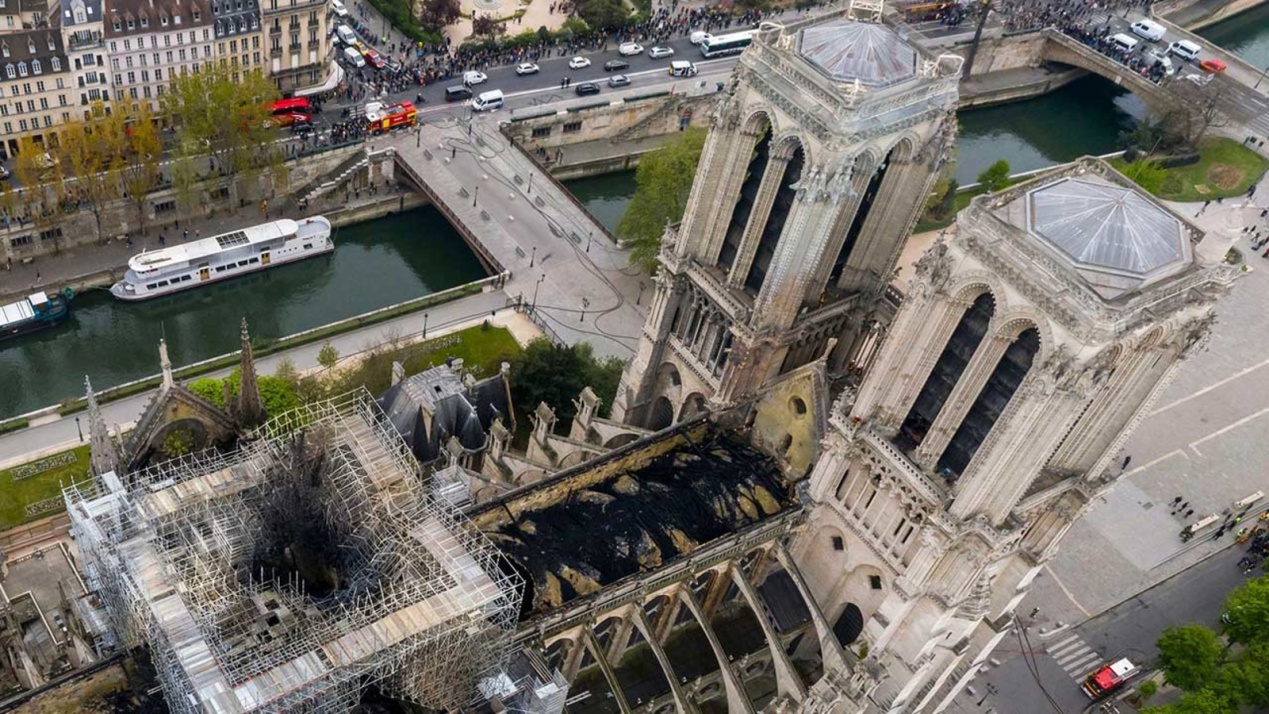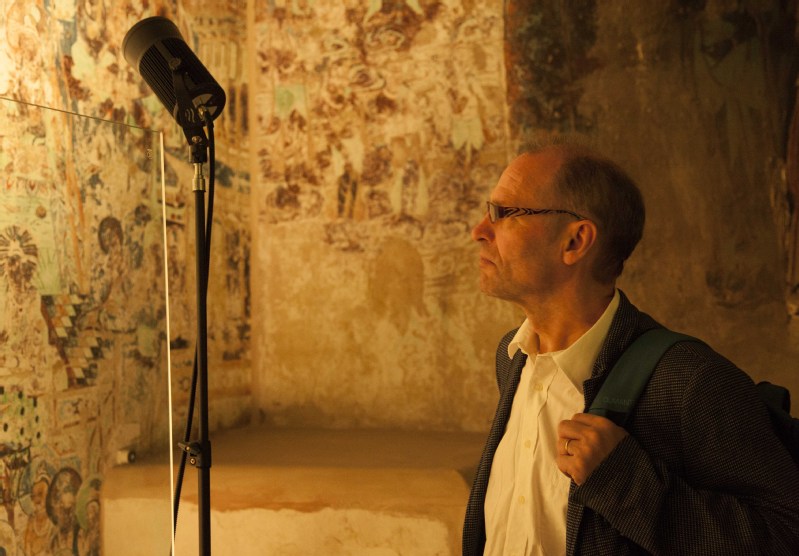Can digitalization help preserve cultural relics forever?
The whole world was extremely grieved at the news that Paris’s Notre Dame Cathedral was engulfed in flames, causing its main spire to collapse and raising fears for the future of the 850-year-old building and its precious artworks. Just as President XI Jinping said in his condolence message to his French counterpart, Emmanuel Macron, Notre Dame Cathedral is an iconic symbol of the French civilization and an outstanding treasure of human civilization.

Fortunately, Andrew Tallon, a professor of art at Vassar College, used lasers to painstakingly scan the cathedral in 2015. His work, a nearly perfect digital replica of the Gothic structure, could help architects and engineers rebuild it.
The calamitous fire of Notre Dame Cathedral also pulled a tug at the heartstrings of many Chinese experts in relics protection.
“Storing digitalized documents of cultural relics will provide reliable resources for future exploration,” said DIAO Changyu, an associate professor in the Cultural Heritage Institute at ZJU, “The current technology is far from perfect, but it may be the only hope for the restoration of Notre Dame Cathedral after the fire. Moreover, digitalization is also a way of preserving cultural relics. It is essentially identical to printing and engraving in ancient times. We may discover a better alternative to digitalization in the future, but this seemingly ‘imperfect’ technology can still fulfill needs at present.”
“3D recording will be on file for future reference thanks to its precision,”said LI Zhirong, an associate professor in the Cultural Heritage Institute at Zhejiang University. She is committed to exploring the feasibility of preserving ancient buildings in archaeological ways and potential approaches. She is currently engaging in research into the 3D digital technology in protecting China’s grotto temples.
In the past, ZJU’s Cultural Heritage Institute teamed up with the Institute of Yungang Grottoes to pioneer the large-scale and high-precision duplication of cultural relics through 3D printing technology and bring back to life the 3rd grotto in the World Cultural Heritage Site—Yungang Grottoes.

The digitalized preservation of cultural relics is, in essence, the comprehensive and permanent protection of their information in digitalized ways, thereby facilitating the sustainable protection of entities, LI Zhirong stressed.
In addition to laser scanning, the multi-image 3D modeling technology and photogrammetry have also enjoyed extensive applications in the digitalization of architectural heritage.
Civilization is holistic. With the application of digitalization technology, the shape and color of the cultural relic can hopefully be chronicled in an accurate and high-fidelity manner.
“In this way, the wisdom of ancestors embodied in the creation and preservation of cultural heritage can be presented in an ‘articulate’ way and thus be perceived by progeny,” said LI Zhirong, “Digitalization enable us to record cultural heritage in a comprehensive way and endow them with eternal life in the digital world. Therefore, more people can gain access to civilization via the Internet.”
“In terms of operation, there are two urgent questions: the automation of the work to improve efficiency and reduce costs and the enhancement of completeness and precision in recording to document more information in cultural relics,” DIAO Changyu expressed.
Luckily, China has started to employ digital technology to preserve the information of cultural relics on a large scale. As early as April 2018, the National Cultural Heritage Administration issued “Notice on Strengthening the Digitalized Preventive Protection of Movable Cultural Heritage”. The fire at Notre Dame in Paris rang the warning bell for us. For one thing, the preservation of entities remains to be a number one priority. For another, the digitalized recording of cultural heritage should be carried out immediately.